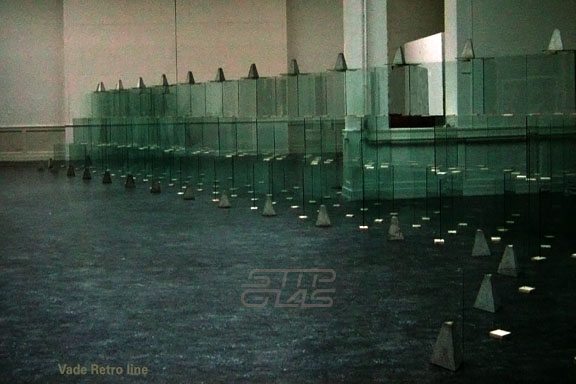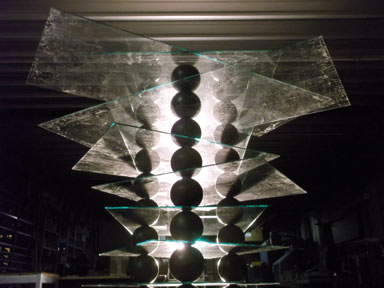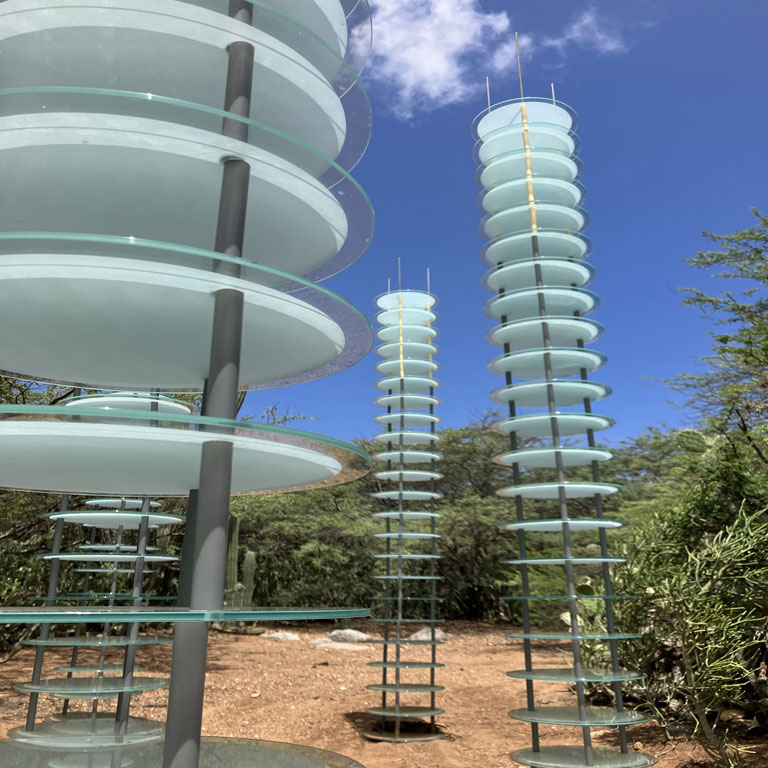Fortifications
The Vade Retro Line, an obstruction of despair and hope. Build to be able to resist. In practice mostly just an obstacle but psychological absolutely a tour the force.
The perpendiculair, a vertical organized fort. The more visible the construction gets , the more frightening the Perpendiculair becomes. Vulnerabillity as a building stone for firmness. The Perpendiculair, innate architecture of the desirability. The defence works - based on ratiional thinking - as a guardian of attained values.
The Donjon; defence trough fragility. A stronghold tower rebuilt on the fundaments of the former stronghold tower of Castle Horn (13th century) in Horn (NL). Unanimous chosen as the winner by an expert jury for the Art Prize from the Foundation of Art and Culture, Horn 2003



Vade Retro





Perpendiculair




Donjon
Unanimous chosen as the winner by an expert jury for the Art Prize from the Foundation of Art and Culture, Horn 2003



Structure One

Duc d'Alva
These almost 3-meter high towers made of sheet glass and little else reflect on a rebellious period in history during the Eighty Years’ War, which ultimately led in 1648 to the independence of the Netherlands from Spain, the global superpower of the 16th century. The Duke of Alba was a notoriously cruel figure in the Spanish persecution of the Dutch Protestants during the conflict. His dress was typical for the time: black clothing with a wide white collar. In the canals of the Netherlands both then and now you find black wooden posts with their tops painted white, intended to keep ships from damaging the banks or bridges along the canal. In a humorous play on words, this post is called a “dukdalf”. This word itself is a bastardized version of the French “Duc d’Alva”. Why French? Holland had become at that time a destination for Huguenot exiles, who played a significant role in the spreading of the French language all over Europe, including into Dutch administration.
In the same way that the Dutch rebelled against the Duke, the ship captains navigating the canals will bump into a “dukdalf” as a symbol of rebellion against oppression. Needless to say, a “dukdalf” doesn’t give way. The corridor of “dukdalven” erected in the sculpture garden of Aruba have been placed along a path that collects water on rainy days, suggestive of the Dutch canals. But unlike those in the Netherlands as well as the harsh Duke, these “dukdalven” are flexible. Despite being constructed from glass, when bumped they can sway back and forth, returning to an upright position.
In keeping with the concept of the juxtaposition of rebellion vs. oppression, we can’t overlook the experience of the Dutch as both victim and aggressor. In 1634 the Dutch, long sailors and merchants active in the Caribbean, invaded Curaçao and took it over from the Spanish. A good example of “controversy” as a major thread running through Van Stiphout’s work.
The suppression of other people … we had it and we did it. We were not free from it.






